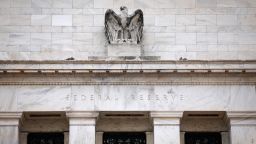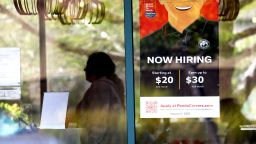The Federal Reserve is expected to hold its benchmark lending rate steady this week as it waits for more data to understand how previous rate hikes are affecting the US economy. The central bank raised rates to a 22-year high in July.
At the conclusion of its two-day policy meeting on Wednesday, the Fed is also set to release a fresh set of economic projections that will likely reflect stronger economic growth and slightly lower unemployment this year, compared with previous estimates. Officials’ new economic projections will likely show at least one more rate hike this year. There seems to be a consensus among Fed officials that holding rates steady this month is the right move — but some have said the Fed could raise rates again after September.
Investors will be looking for clues that the Fed is done hiking rates, but Fed Chair Jerome Powell will likely stress in his post-meeting news conference that inflation remains unacceptably high. That would leave the door open for another rate increase, which could come when the following meeting concludes, on November 1. Financial markets currently see a 69% chance the Fed will continue to pause rate increases in November, according to the CME FedWatch Tool.
Why the Fed will likely pause
Inflation and the job market have both slowed steadily in the past year, giving the Fed enough room to hold rates steady and wait for more data to come in. Despite ongoing volatility in energy markets, inflation is also expected to keep slowing in the coming months, mostly due to easing car prices and rents. All together, those factors give officials enough reassurance that they can pause rate hikes without risking a resurgence in price increases.
“There is nothing that is saying we need to do anything imminent anytime soon,” Fed Governor Christopher Waller told CNBC earlier this month, before the latest Consumer Price Index showed higher gas prices helped push up headline inflation in August. “We can just sit there and wait for the data.”
The last time central bank officials decided to hold rates steady was in June, as uncertainty spiraled as to how much the spring banking crisis would constrain lending. When it became clear the economy was not being hammered by that turbulence, the Fed raised rates again in July.
There is also the argument that the central bank has already raised rates high enough to eventually constrain the economy and bring inflation down to the Fed’s stated target of 2%.
“We’ve gotten monetary policy in a very good place,” New York Fed President John Williams told Bloomberg earlier this month.
But even though the Fed is reassured by inflation’s steady slowdown — and the outlook — the central bank is still facing a number of uncertainties on the horizon.
The US economy’s wild cards
The Fed wants to defeat inflation without inflicting unnecessary economic damage that would also jack up unemployment. But while rising interest rates began to affect the housing market almost immediately, officials are still trying to gauge the impact on economic growth, spending and the job market.
Research shows that it can take at least a year for those effects to fully kick in, and it’s already been about a year and half since the Fed began to lift rates. Chicago Fed researchers argued in a recent paper that rate hikes have already moved their way through the economy and that inflation could come down to the Fed’s 2% goal by mid-2024 without a recession, at the current level of rates.
A possible government shutdown preventing the release of key inflation and employment data could also be a problem for the central bank.
In the event of a shutdown, the Bureau of Labor Statistics says it will stop releasing data, including key figures on inflation and unemployment. That lack of crucial government data would make it even more difficult for investors and the Federal Reserve to interpret the US economy.
Greg Valliere, chief US policy strategist at AGF Investments, said Tuesday he now sees a 70% chance of a government shutdown. The potential shutdown could be a “long one lasting into the winter,” Valliere wrote in a note on Tuesday.
Another economic wild card is the threat posed by rising energy prices, which have pushed up prices at the pump in recent weeks. The national average for regular gas is currently $3.88 a gallon, the highest price since October 2022, according to AAA.
In theory, elevated energy prices could feed into core inflation — which Fed officials are more focused on — if those prices stay high for long enough, jacking up the prices of airfares and freight. More importantly, it could affect inflation expectations.
“The Fed is obviously most focused on core, but they’re not going to ignore what’s going on with energy prices, particularly if the higher gasoline prices begin to affect inflation expectations and wage demands, which is a real possibility,” Mark Zandi, chief economist at Moody’s Analytics, told CNN.
The ongoing United Auto Workers strike is also something the Fed will be watching, mostly because of what the strike reflects about the labor market, rather than the possible economic impact.
“The Fed is thinking the UAW strike is just another sign that the labor market remains relatively tight,” said Andrew Patterson, senior international economist at Vanguard.
“They think that when you start to see these strikes — like we saw with the railroads for example — that they’re a sign of relative strength in the labor market, so workers feel they can go on strike.”
The Fed is set to announce its September policy decision at 2 p.m. ET on Wednesday; followed by a news conference at 2:30 p.m. ET, headed by Fed Chair Jerome Powell.






